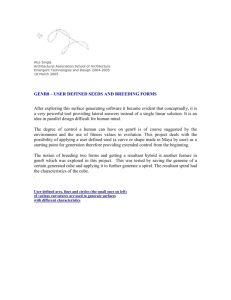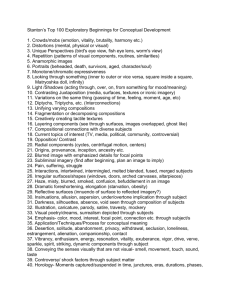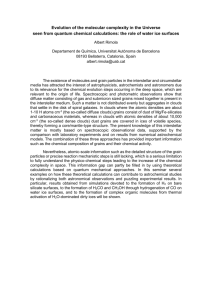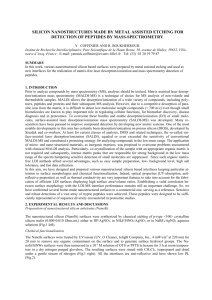Detailed Project Description
advertisement
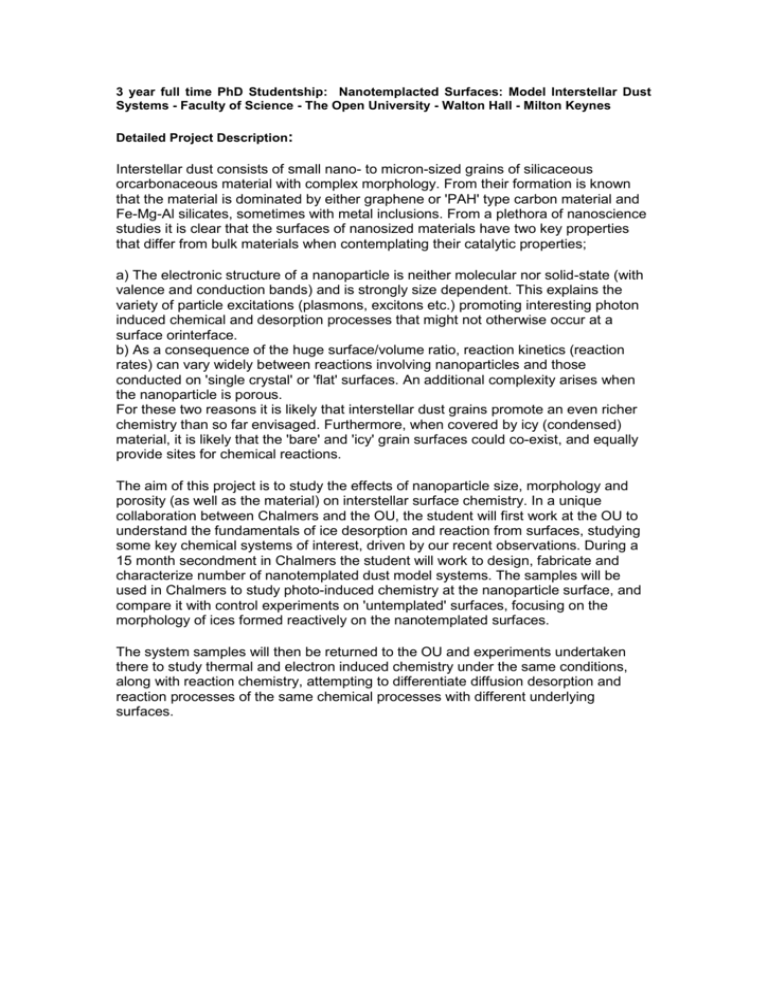
3 year full time PhD Studentship: Nanotemplacted Surfaces: Model Interstellar Dust Systems - Faculty of Science - The Open University - Walton Hall - Milton Keynes Detailed Project Description: Interstellar dust consists of small nano- to micron-sized grains of silicaceous orcarbonaceous material with complex morphology. From their formation is known that the material is dominated by either graphene or 'PAH' type carbon material and Fe-Mg-Al silicates, sometimes with metal inclusions. From a plethora of nanoscience studies it is clear that the surfaces of nanosized materials have two key properties that differ from bulk materials when contemplating their catalytic properties; a) The electronic structure of a nanoparticle is neither molecular nor solid-state (with valence and conduction bands) and is strongly size dependent. This explains the variety of particle excitations (plasmons, excitons etc.) promoting interesting photon induced chemical and desorption processes that might not otherwise occur at a surface orinterface. b) As a consequence of the huge surface/volume ratio, reaction kinetics (reaction rates) can vary widely between reactions involving nanoparticles and those conducted on 'single crystal' or 'flat' surfaces. An additional complexity arises when the nanoparticle is porous. For these two reasons it is likely that interstellar dust grains promote an even richer chemistry than so far envisaged. Furthermore, when covered by icy (condensed) material, it is likely that the 'bare' and 'icy' grain surfaces could co-exist, and equally provide sites for chemical reactions. The aim of this project is to study the effects of nanoparticle size, morphology and porosity (as well as the material) on interstellar surface chemistry. In a unique collaboration between Chalmers and the OU, the student will first work at the OU to understand the fundamentals of ice desorption and reaction from surfaces, studying some key chemical systems of interest, driven by our recent observations. During a 15 month secondment in Chalmers the student will work to design, fabricate and characterize number of nanotemplated dust model systems. The samples will be used in Chalmers to study photo-induced chemistry at the nanoparticle surface, and compare it with control experiments on 'untemplated' surfaces, focusing on the morphology of ices formed reactively on the nanotemplated surfaces. The system samples will then be returned to the OU and experiments undertaken there to study thermal and electron induced chemistry under the same conditions, along with reaction chemistry, attempting to differentiate diffusion desorption and reaction processes of the same chemical processes with different underlying surfaces.



